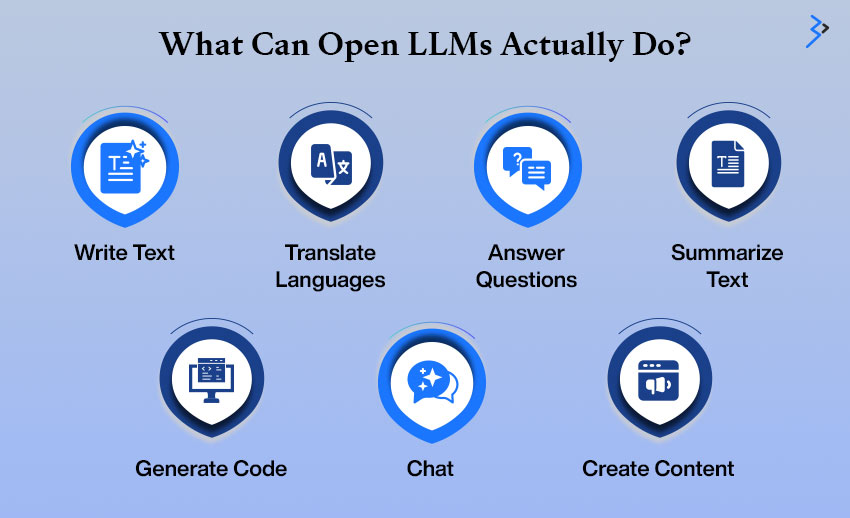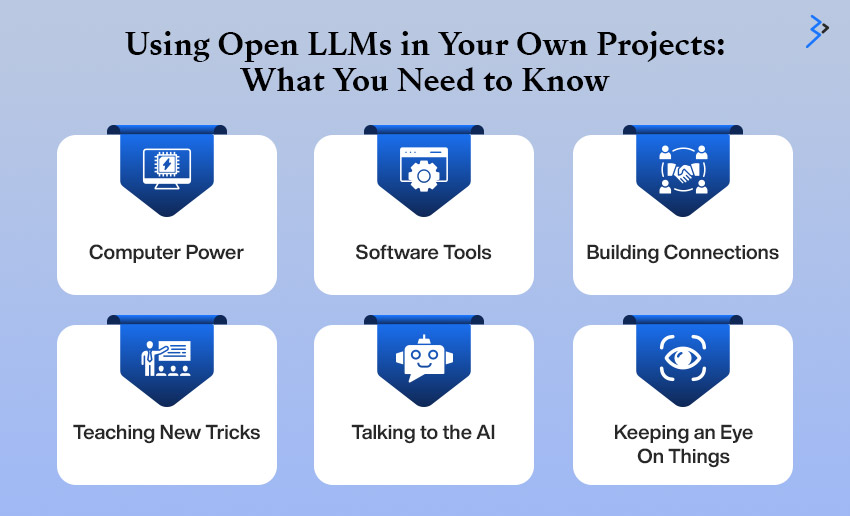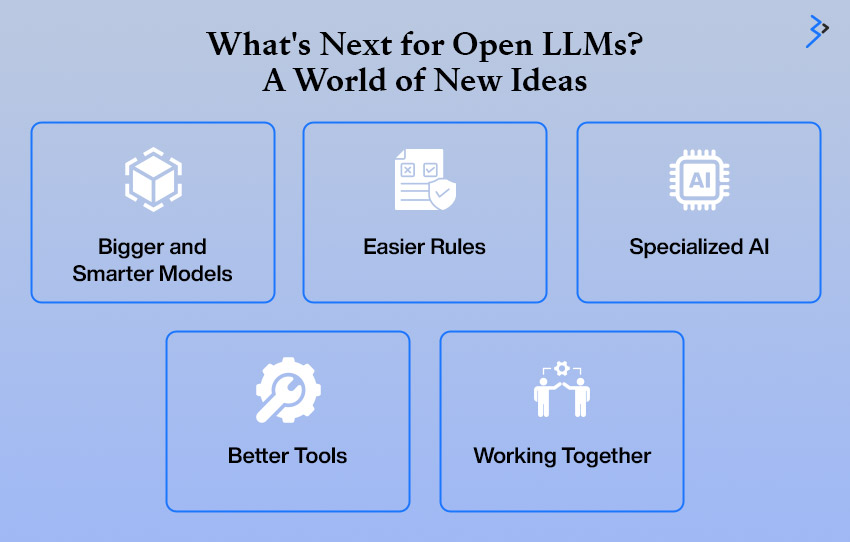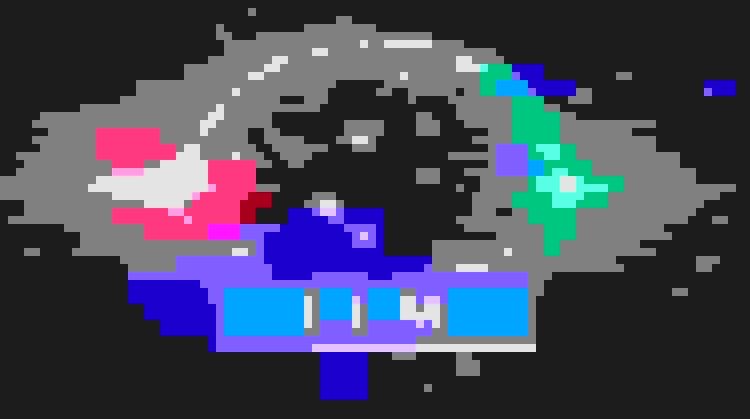Table of contents
Why Open LLMs? A Response to the Closed-Off World
Meet the Key Players: Open LLMs in Action
What Can Open LLMs Actually Do?
Understanding the Rules: Why Licensing Matters
Using Open LLMs in Your Own Projects: What You Need to Know
What's Next for Open LLMs? A World of New Ideas
Frequently Asked Questions
Imagine an AI that writes like a human, translates languages on the fly, and even helps you code – that's the power of Large Language Models (LLMs).
For too long, this incredible technology felt like a closely guarded secret of tech giants. But the winds are changing! A thrilling movement is afoot: the rise of Open LLMs.
Think of it – the core intelligence of these models is becoming accessible to everyone, just like open-source software unlocked the world of computing.
This isn't just about shared code; it's about igniting global collaboration and fueling new Artificial Intelligence breakthroughs with transparency at its heart.
Ready to explore this exciting frontier? We'll dive into the world of Open LLMs, spotlighting stars like BLOOM and LLaMA, uncovering what they can do, navigating the rules of engagement (licensing), and showing you how to harness their power in your own creations.
Get ready to witness the dawn of truly open AI language!
Why Open LLMs? A Response to the Closed-Off World
When the first really impressive LLMs came out, you usually had to access them through special online connections (APIs) or by working with the companies that made them. These models were really good, but it felt like looking into a "black box" – you couldn't see how they worked, limiting what researchers and developers could do. People wanted more control, the chance to really dig in, tweak them, and make them fit specific needs.
This wish for openness led to the creation of open LLMs. The basic idea is simple but powerful: make the core of the model (the "brains" that learned everything) and often the instructions for how it learned publicly available. This means anyone with a decent computer can download them, look inside, change them, and build new things.
Read More - Elevate your Adobe Experience Manager Sites Website with Generative AI Chatbots
Meet the Key Players: Open LLMs in Action
BLOOM (BigScience Large Open-science Open-access Multilingual Language Model)
BLOOM is a super-friendly, multilingual LLM built by a vast group of researchers worldwide. It's got a massive brain with over 176 billion connections and can understand and speak 46 human languages plus 13 programming languages! Its open license means many people can use it and improve it. You can find many cool, fine-tuned versions of BLOOM showing its impact [Hugging Face Model Hub].
LLaMA (Large Language Model Meta AI)
Developed by the smart folks at Meta AI, the LLaMA family of models is known for being surprisingly good even though they're not as huge as some other models. They come in different sizes, from 7 billion to 65 billion connections, and can do many language-related tasks really well. Meta AI has made LLaMA more accessible, leading many people to experiment and build on it [Meta AI (LLaMA Info)]. The release of LLaMA 2, with easier rules for using it, has made it even more popular.
Other Cool Open LLMs
Besides BLOOM and LLaMA, tons of other open LLM projects are popping up. Universities, research labs, and even small AI companies are creating them. Some focus on specific languages, others on particular areas of knowledge, or even new ways of building the models.
The Hugging Face Model Hub is like a big online library where you can see how many open LLMs are out there and how fast things are moving [Hugging Face Model Hub]. Lately, around late 2024 and early 2025, we're seeing models from Mistral AI, lots of improved versions based on LLaMA, and special models that are great at writing code.
What Can Open LLMs Actually Do?

Open LLMs are constantly improving, often catching up to the big, private models. While how well they perform can depend on their size, the data they were trained on, and if they've been specially tuned, many open LLMs can already do some pretty impressive things:
- Write Text: They can create text that makes sense and fits the situation, whether writing a story or drafting an email.
- Translate Languages: They can translate text from one language to another, and BLOOM is particularly good at this because it knows so many languages.
- Answer Questions: They can understand questions and find answers based on their learning.
- Summarize Text: They can take long writing pieces and shorten them, which is helpful for things like the book summary app we mentioned.
- Generate Code: They can even help programmers by writing bits of computer code.
- Chat: They can power chatbots and virtual assistants, although they often need extra training to be really good at conversations.
- Create Content: They can help create different kinds of content, such as articles for websites or posts for social media marketing.
Read More - Generative AI: Redefining the Boundaries of Traditional Machine Learning
What's really cool about open LLMs is that you can train them to excel even better at specific tasks. Because you have access to their "brains," developers and researchers can train them on special sets of data tailored to their needs.
For example, you could train an open LLM on many legal documents. Hence, it becomes really good at understanding legal language or customer service conversations and building a super helpful chatbot for customers.
Understanding the Rules: Why Licensing Matters
Before you start using an open LLM in a project, especially if you plan to make money with it, you absolutely need to understand its license. Unlike regular open-source software licenses that are pretty straightforward, the rules for open LLMs can be a bit more complex.
- For Research Only: Some of the first open LLMs, like early versions of LLaMA, had licenses mainly for research. This often meant you couldn't use them for commercial purposes without asking for special permission. Always double-check the license!
- More Freedom: Newer open LLMs, like LLaMA 2, have licenses that give you more freedom, including allowing commercial use. However, they often have rules about giving credit to the original creators and how you can share the model.
- Made for Sharing: Projects like BLOOM use licenses designed to encourage many people to use them and help make them better.
The most important thing to remember is to always read the license agreement carefully. Make sure you know what you're allowed to do with the model, whether you can use it to make money, whether you need to credit the creators, and whether there are any limits on sharing or changing the model.
Read More - Creating a Simple Chatbot: Shaping the Future of Conversational AI
Using Open LLMs in Your Own Projects: What You Need to Know

- Computer Power: Running these big language models can take a lot of computer power, especially from graphics cards (GPUs). How much power you need depends on the size of the model. Smaller models like the 7 billion parameter LLaMA can run on more regular computers, but huge models like BLOOM need powerful clusters of GPUs. Often, using cloud computing services is the way to go.
- Software Tools: Special software libraries make it easier to work with open LLMs. One popular one is Hugging Face's Transformers library, which lets you easily load and use many different pre-trained models, including many open LLMs. Other tools, like vLLM, are being developed to make running these models faster and more efficient.
- Building Connections (APIs): To get your app to talk to the open LLM, you'll probably need to build a digital connector called an API. This lets your app send questions or instructions to the model and get its answers back. You can use programming tools like Flask or FastAPI in Python to create these APIs, especially when leveraging professional Python Development Services for scalable and efficient solutions.
- Teaching New Tricks (Fine-tuning): As we talked about earlier, you can make an open LLM much better at a specific task by training it further on a smaller set of relevant data. Libraries like Transformers have tools to help you do this.
- Talking to the AI (Prompt Engineering): How you ask a question or give instructions (the "prompt") really affects the kind of answer you get from an LLM. Writing clear and specific prompts is key when working with these models.
- Keeping an Eye On Things (Monitoring and Evaluation): Once you've integrated an open LLM into your app, it's important to monitor its performance and check whether its answers are good. This will help you find ways to improve it and ensure its correct operation.
What's Next for Open LLMs? A World of New Ideas

- Bigger and Smarter Models: As researchers learn more and computers get more powerful, we'll likely see open LLMs that are even bigger and smarter, maybe even as good as or better than the private models we have now in some areas.
- Easier Rules (More Permissive Licensing): The trend of having easier-to-understand and more open licenses will probably continue. This will allow more people to use open LLMs for research and making new products.
- Specialized AI: We'll probably see more open LLMs specifically trained for certain jobs, like writing computer code, doing scientific research, or being creative writers.
- Better Tools and Ways to Use Them: New and improved software tools that make it easier to run these models, fine-tune them, and put them into apps will make this technology more accessible to everyone.
- Working Together (Community Collaboration): Because these projects are open, they encourage people in the AI community to collaborate, share what they learn, and devise new and better ways of doing things.
Frequently Asked Questions
1) What are Open LLMs? How are they different from other LLMs?
Open LLMs are language AI models in which the core "brains" (model weights) and often the learning instructions are publicly available under specific rules (licenses). Unlike private LLMs, which are kept secret and accessed through online connections, open LLMs let you see inside, change them, and build upon them.
2) What are some well-known Open LLMs?
Some big examples are BLOOM, which is open to everyone and speaks many languages, and the LLaMA family from Meta AI, which performs well even though it's not the biggest and has increasingly open rules for using it (like LLaMA 2). Lots of other specialized open LLMs are also appearing.
3) What can Open LLMs do?
They can perform many language-related tasks, such as writing text, translating, answering questions, summarizing, writing code, and even powering chatbots (often needing extra training). However, their ability to do these things depends on their size and training.
4) What about the rules (licensing) for Open LLMs? Can I just use them for anything, even to make money?
The rules for using open LLMs can vary a lot. Some are just for research, while others are more open. You always need to carefully read the license to know what you can do, especially if you plan to use them commercially. You might need to give credit to the creators.
5) How can I actually use Open LLMs in my own software?
You'll need special software tools (like Transformers), might need to build a way for your app to talk to the model (an API), and will need to think about the computer power required (often needing graphics cards). Sometimes, you'll also want to fine-tune the model for your specific needs and learn to give it good instructions (prompt engineering). Keeping an eye on how well it's working is also important.
Related Articles
Digital Transformation
Leveraging 3rd Party LLMs: A Guide to Commercial AI Platforms
Digital Transformation
RAG (Retrieval-Augmented Generation): Making LLMs Smarter with Real-Time Data
Digital Transformation
Exploring Generative AI’s Revolutionary Impact In Automotive Industry


